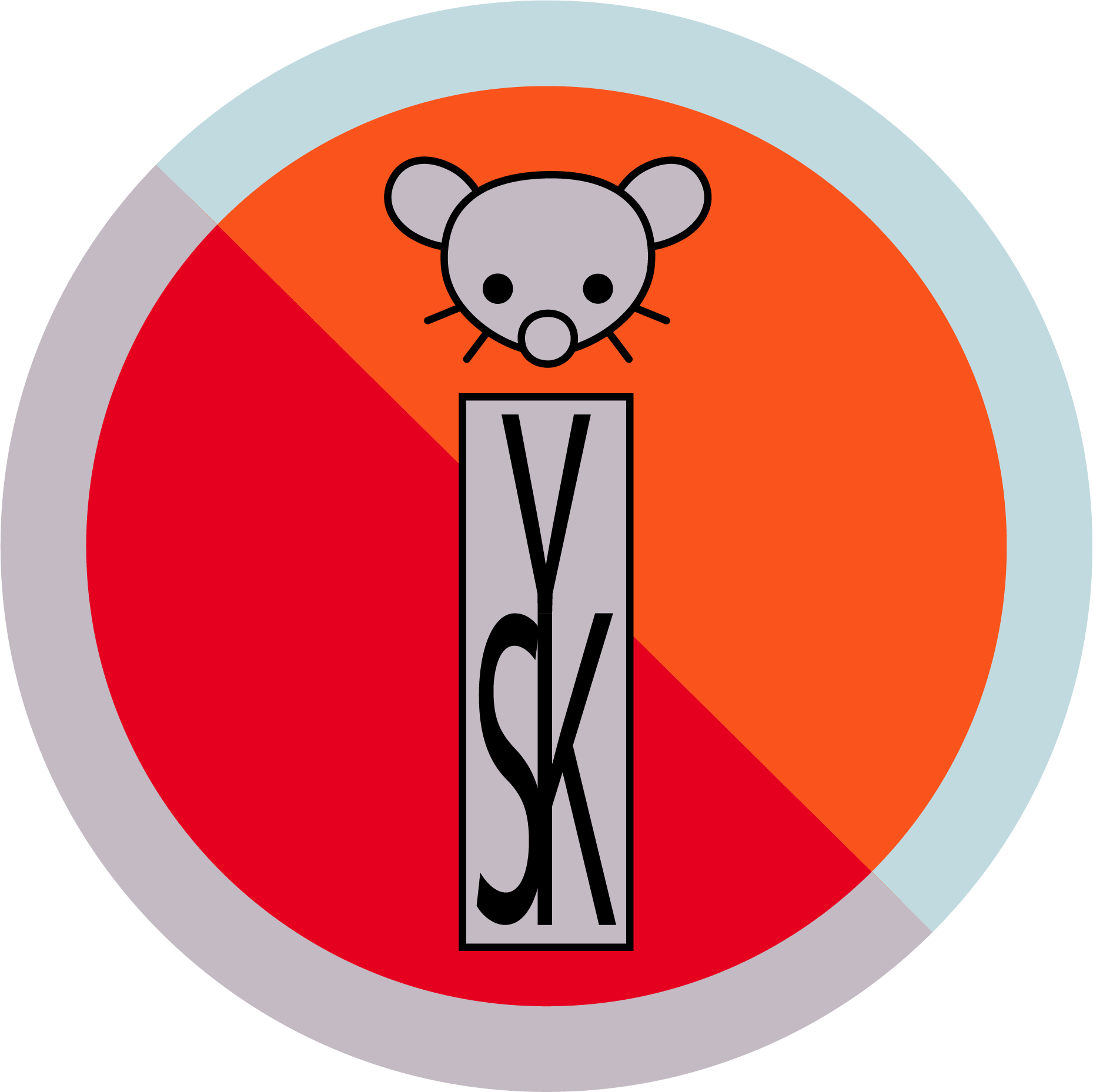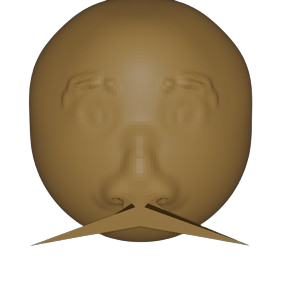I see the diagram: the first knife is for cutting bread. The second is for cutting fillets. The third is for cutting… chefs?
I just use a small knife and a big knife. This covers all use cases. Yes they also cut bread because I keep them sharp.
There are but two necessary knives. A chef’s knife and a paring knife. Sharpened appropriately. Usually not even a paring knife but sometimes the small size is beneficial.
Cleavers are really nice to have for chopping and transferring vegetables though.
Bread knife would like a word. Chef knife technically works but bread knives are usually longer and work much better at cutting without smooshing.
Scissors too. A good pair of kitchen scissors makes slicing small vegetables like green onions much easier.
Holy shit I never thought about using the scissors on actual food, I’ve only ever used them to open packages containing food
Also great for cutting a pizza.
Sharpen your knife. If it’s not able to cut bread or tomatoes without smooshing it needs sharpening.
I can cut bread and tomatoes. A bread knife does a better job with bread.
And a filet knife does better with fish. And a boning plus a slicing knife does much better with meat. Not my point but that’s ok.
A butter knife could cut them all too.
Not properly. But a chef’s knife can.
Bread knives are so much nicer to cut bread with though. But yeah, a chef’s knife and a paring knife are all you “need”.
I definitely need a bread knife to properly cut good bread, if only for the teeth. The bread I eat is more dense and has a hard crust compared to say American wonderbread. I also like to dry out some of it and then double toast slices for that extra crunchiness. No way a smooth edge can deal with that.
I was a professional cook (up to sous chef) in fine dining for a decade. Guess I’m just an amateur yet.
Well good for you, i guess you cooking anecdotally in fine dining invalidates my experience entirely. All of a sudden the bread parts itself on my chef knife like the red sea for moses.
Perhaps you just need to learn to use the knife properly. Knives also need a steel which should be used regularly. Blunting a knife on a crust shouldn’t be a thing if you keep your blade sharp. That’s the point.
I’d include a santoku in there, and probably some scissors. Sometimes you just need the straight edge of a santoku, instead of the curved edge of a chef’s knife.
And sometimes serration is necessary. You’ll blunt your chefs knife on certain sourdough crusts, or crush softer breads, but a bread knife will glide right through.
A chefs knife will do for everything. Keep it sharp enough and it’ll even slice bread. As for the onion horizontal cuts are unnecessary. Offset radial cuts are fine (as you move away from the centre vertical cut you angle it more).

What’s the x axis on those graphs? I can’t zoom in enough on this picture to read it. I did look it up, but I only found versions with the exact same resolution
I think it says “Number of Cuts,” but it’s really hard to tell.
It’s not your fault; even if you could zoom in, there’s not enough resolution to make out any details.
Your Lemmy app is probably preventing you from zooming images beyond a 1:1 pixel ratio, preventing you from zooming them past their native resolution. Voyager doesn’t have that issue, if you were considering a different app.
I’m on voyager, lol, but that’s good to know. I can zoom in further, but there’s no point, it doesn’t get clearer.
I have absolutely no idea. I grabbed the first illustration that showed what I described (poorly).
“Pick the right blade.” Santoku. The answer is Santoku.
I’m a bunka kind of fella.
Nah chef’s knives are better, more versatile.
It might be a matter of preference/taste?
I don’t like the curved point of mine, I think I’ll go for a chef knife instead
If you want a cheap cutting board because you can’t afford end grain, look into hinoki boards. They’re cheap and very soft wood.
As with all wooden boards, make sure you seal it first with a neutral oil such as mineral oil.
I use a couple of damp paper towels under the chopping board to hold it still, then when I’m done I use the damp paper towels to wipe the knife, board, and bench
Edit: for vegetables only. Not with meat jfc
Have you never heard of cross-contamination? Using the same towel that touched the counter to wipe the knife and cutting board as well is disgusting as fuck.
For your sake (and the sake of any guests you have over), I hope you’re talking about a workshop knife, not the kitchen. I hope you never get a restaurant job, either.
EDIT: Jesus Fucking Christ people, take a food safety course. Yeah I am brash and a bit of a dick but I’m not wrong.
Some people regularly wipe down their counters, or just fucking disinfect their work surfaces before they start cooking. Non-toxic disinfectants like Mean Green will work in 2 minutes, and you can spray it before you start pulling out your pots and pans. Then just wipe the counters really quick, and you’re good to go.
Not with meat, or course. When chopping vegetables.
This chart is missing a knife that I have. The blade hooks forward instead of backwards, like a bird’s beak.
Since it’s small and the tip extra pointy, I use it for precision cutting. I’ve also found it useful for thin slides of cheese, since the blade is also not as thick as the other knives in my set. Still, I’m wondering what its actual purpose is for.
Santoku knife. I was just about to comment the same thing.
I have that one too but that’s not the knife I’m talking about. It’s about the size of a paring knife and it hooks forward. Almost like a scythe but not nearly as dramatic of* a curve.
(When I get home from work I can upload a picture if anyone cares to help out.)
Turning Knife?
I’m pretty sure it’s just called a bird’s beak paring knife.
Reading further about it, it’s intended for tasks while holding the object you are cutting, rather than using a cutting board. Like peeling an apple in your hand.
Ah okay that makes sense. I prefer a peeler, but I can see purists preferring such a knife. Thanks for the info.
Peeling knife? There’s also hook knife, but that can be a variety of things. Cheese knife hooks backwards and has two points.
Of course this is done in idiocy imperial. Fuck your 'Murican “we need to be special so we use this objectively shitty thing to be different”. Only 3% of the world has a use for this, while the rest 97% are fucking tired of having to do extra work to convert.
What the fuck are you on about? What do you need to convert in this?
I guess things like dicing = 1/4" cubes
Yeah, because saying “6.25mm cubes” is so much more efficient /s
It’s not efficiency, it’s just not easy to visualise for people that have grown up elsewhere.
Julienne: 3mm × 3mm, 40-50mm in length
Brunoise: Diced Julienne, 3mm cubes, can be as small as 1 or 2mm
Diced has no official size, but it’s bigger, can be 5mm to 20mm depending on the dish.
There are predictably French names for all the different sizes, this page gets a bit muddled with inches in there again, but since they’re all French, I’d say trust the millimetres.
As a chef, the only inaccuracy I see here is that bamboo cutting boards are good for knives. They are a great, cheap, sustainable option, but the silica content makes bamboo incredibly hard, and it will dull your blades faster than wood or plastic cutting boards.
The best cutting boards use end-grain for this exact reason. It’s not just a decorative thing. The direction of the wood grain directly determines how quickly the board will dull your knife. Wood is made of two main parts: A hard fiber, and a soft filler in between each fiber. The hard fiber is what dulls your knife when you cut.
Imagine cutting on a tightly packed bundle of really tiny straws. If you cut across the bundle, your knife will be cutting into each straw, dulling in the process. But if you cut on the end of the bundle, the knife blade will slide between the straws instead of cutting them.

The straws will last longer when you’re cutting on the end (because you’re not cutting them) and your blade will last longer (because it isn’t cutting the straws). And an end grain cutting board is essentially cutting on the end of the straw bundle.
Did you just make that illustration? It’s really neat!
Bamboo cutting boards suck because you can’t put then in the dishwasher. They break apart from the heat, which also means that you can’t get the water hot enough to sanitize (140°F+), so hand washing is a non-option either without burning yourself.
If you use wooden cutting boards / blocks, rub mineral oil into them every once in a while. This will reduce the water they absorb and make them less likely to warp or split.
I will add another bullet point to the list above, specifically regarding cutting boards. Poly cutting boards are also acceptable and primarily what I use. However, if I see you using a glass cutting board or a plate as a cutting board, or chopping directly on your granite countertop, I am afraid I am going to have to hurt you.
I am, as you can imagine, the default knife sharpener within the circle of my family and friends. However for quite some years I would not sharpen any knives for my sister anymore because she refused stop using her stupid 1980s glass cutting boards. (I believe they were probably actually intended to be serving trays, but good luck making people understand that.) She kept complaining that my sharpening was “no good” because her knives dulled so quickly.
I was eventually able to coordinate with my brother in law who was also sick of it, and we located all of the glass boardlike objects in the house and surreptitiously threw them away.
Doing the lord’s work here.
The chopping/grip advice is missing a critical component: your two farthest forward knuckles on your non-knife hand should be contacting the knife blade at all times. This gives you precise control and you know exactly where the cutting surface is. It takes a lot of practice to do properly, but that is how the pros do it. I recommend this video from Jacques Pepin for an example: https://youtu.be/nffGuGwCE3E
Chinese chef knife is missing. It’s not a meat cleaver, the blade isn’t nearly thick enough for it, but it does make quick work of veg. It’s also one of the only knives used for Chinese cooking. Learned about it from Martin Yan.
I use a bred knife to slice cheese off a block every day. Line it up and push down, one hand on handel the other on the spine at the top. It works better than any other knife to slice cheese blocks.
This post makes it sounds like I am committing a war crime.







